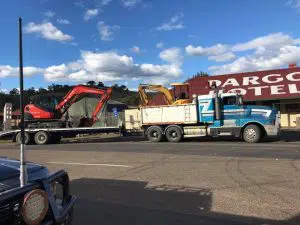Choosing the Right Septic Tank Size for Your Sydney Property
If you’re a homeowner in Sydney considering installing a septic tank or replacing an existing one, one of the most critical decisions you’ll need to make is determining the appropriate septic tank size for your property. This decision has a significant impact on the functionality, longevity, and efficiency of your septic system. In this comprehensive guide, we’ll walk you through the steps to help you make an informed choice that suits your property’s needs and local conditions.
Why Septic Tank Size Matters
Before we dive into the specifics, it’s crucial to understand why choosing the right septic tank size is essential:
Waste Processing: Septic tanks are responsible for breaking down solid waste and treating wastewater. If the tank is too small, it won’t have sufficient capacity to do this effectively.

Preventing Overflows: An undersized tank can lead to frequent backups, overflows, and costly repairs.
Longevity: A properly sized septic tank will last longer and require less maintenance.
Regulatory Compliance: Local regulations in Sydney may dictate minimum septic tank sizes based on property size, occupancy, and environmental factors.
Assess Your Household Needs
Start by assessing your household’s daily water usage and the number of occupants. This information is crucial for determining the appropriate septic tank size. Keep in mind that water usage includes not only drinking and bathing but also laundry, dish washing, and flushing toilets.
Tip 1: Calculate your average daily water usage by monitoring your water meter for a week, noting the readings at the beginning and end of each day.
Consider Sydney’s Local Conditions
Sydney’s unique environmental conditions can influence your septic tank size requirements:
Soil Type: The type of soil on your property affects how well it can absorb treated wastewater. Sydney’s diverse landscape includes different soil types, such as sandy, clayey, or loamy. Soil testing can determine the percolation rate (how quickly soil absorbs water) and guide tank sizing.
Water Table: The distance between your septic tank’s bottom and the groundwater level is critical. A high water table could necessitate a larger tank to prevent contamination.
Local Regulations: Research your local council’s septic tank regulations, which may specify minimum tank sizes based on property size and occupancy.
Tip 2: Consult with a local septic system professional who understands Sydney’s specific conditions to assess your property accurately.
Factors to Consider
To determine the appropriate septic tank size, consider these key factors:
1. Number of Bedrooms
Many Sydney councils use the number of bedrooms in a home as a guideline for septic tank sizing. Generally, a 3-bedroom home will require a 1,000 to 1,500-gallon tank, but this can vary based on other factors.
2. Daily Water Usage
Calculate your household’s daily water usage. A family of four typically uses 400-500 gallons of water per day. Ensure your septic tank can handle this volume efficiently.
3. Soil Percolation Rate
A soil test will determine how well your soil can absorb wastewater. Faster percolation rates allow for smaller tanks, while slower rates may require larger tanks.
4. Property Size
Larger properties can often accommodate larger septic tanks. Consider available space when determining tank size.
5. Future Growth
If you plan to expand your home or add more occupants in the future, factor in potential changes in water usage.
Consult with a Professional
While these guidelines are helpful, the most accurate way to determine the right septic tank size is by consulting a septic system professional in Sydney. They can conduct a site assessment, perform soil tests, and consider all relevant factors to provide a tailored recommendation.
Tip 3: For a Free Quote and Sizing on all Septic Tanks Made in Australia call the team at Eco-Septic on 1800 808 135
Choosing the right septic tank size for your Sydney property is a decision that requires careful consideration of household needs, local conditions, and regulatory requirements. By assessing your water usage, considering Sydney’s unique factors, and consulting with professionals, you can ensure that your septic system operates efficiently and remains compliant with local regulations.
Investing the time and effort into selecting the appropriate septic tank size now will pay off in the long run, ensuring trouble-free operation and peace of mind for you and your family.
For a Free Quote and Sizing on all Septic Tanks Made in Australia call the team at Eco-Septic on 1800 808 135
Related Posts
- How Do Grey Water Recycling Systems Work?
- How To Select The Right Wastewater Treatment System For My Home/Project?
- Keeping Up With The Latest Technology In Wastewater
- What are septic pump wells and how do they work?
- Home Sewage Treatment Plants: What They Are And How Do They Work?
- Why Use A Concrete Septic Tank?
- How to maintain a septic tank
- What To Consider When Looking At A Small Septic Tank For One Toilet




